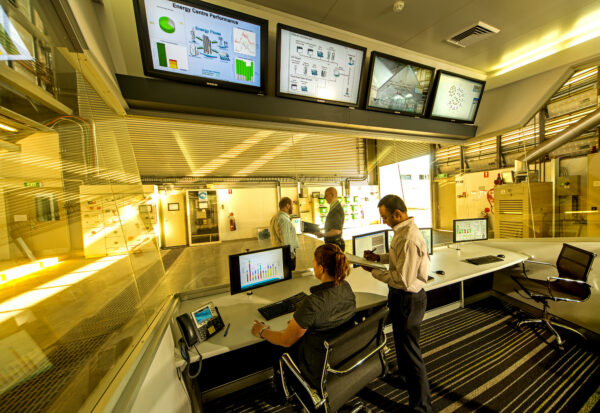Charging our battery-powered revolution
Technological advances and our quest for reliable low emissions energy, places us on the verge of a battery-storage revolution, and our scientists are at the leading edge.
At CSIRO, we’ve been working on batteries for a very long time and innovations like our UltraBattery are part of that story.

Above: UltraBattery at CSIRO’s Centre for Hybrid Energy Systems.
Batteries of all sizes are commonplace in a wide range of applications from household devices and toys, to cars and commercial systems the size of several shipping containers. There are lithium, lead-acid, nickel-metal-hydride, and vanadium-based flow batteries.
“Batteries provide power where or when we otherwise might not be able to find it,” says CSIRO’s Dr Sam Behrens. “Batteries complement solar and wind energy systems by providing power when the sun isn’t shining, or the wind isn’t blowing. Battery systems also provide a host of services that can make the grid more reliable and lower costs for consumers.”
In the quest for low emissions energy from renewable sources such as solar and wind; viable and affordable battery storage has been a vital missing link – before now!
“Technological advances are making battery storage a cheaper and more viable proposition and this trend is expected to continue,” says Sam.
“At our Newcastle Energy Centre, we are testing and evaluating a variety of different battery storage systems in the Stored Energy Integration Facility.”
You can see more by taking the Stored Energy Integration Facility Virtual Tour.
Above: CSIRO’s Stored Energy Integration Facility: real-life testing of energy storage technologies from CSIRO on Vimeo.
The facility tests energy and storage hardware in a controlled environment so clients can find out how energy is being used, and how cost and energy savings can be maximised. The facility contains 900kWh of energy (in standard and advanced lead-acid systems and lithium), which can provide 280kW of power to supply site loads, manage variable power or export to the grid.

Above: CSIRO’s Renewable Energy Integration Facility is helping to develop new grid management technologies.
Benefits to our cities
Australia stands to benefit significantly from the application of battery storage systems in our homes, buildings and cities.
The Energy Network Transformation Roadmap prepared by CSIRO and Energy Networks Australia, outlines a national plan to keep the lights on, make sure bills are affordable, and decarbonise our electricity industry by mid-century.
It sets out measures that could save households an estimated $414 a year on average, by generating their own electricity through ‘distributed’ technologies such as solar panels and batteries. It envisages that Australia could save a total of A$101 billion by 2050, while also bringing net greenhouse emissions to zero.
In practical terms, for a sustainable urban development like Ginninderra, there is the opportunity to trial or use battery storage as a core part of a complete household energy system.
We’ve been working with industry collaborators, Evergen, to develop and improve such systems as pictured below. The main components of systems already on the market are pictured in the diagram, and include:
- Integrated solar PV and battery hardware in the home collects and stores power from solar panels and from the grid
- A smart system monitors, predicts energy use and solar production based on the weather and chooses lowest cost energy supply from the available sources
- Monitoring and improvement – CSIRO provides analysis to improve customers’ system performance

Above: Complete home energy system. Image source: Evergen
